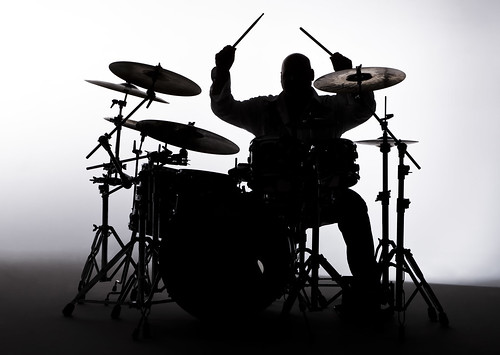
Image : http://www.flickr.com
Bongo, bongo generally only called, are one of the most famous of the percussion instruments. Because of the prevailing popularity of Latin music (thank you, "Dancing With the Stars"), the sounds of the drums are not very familiar to people around the world. Bongos, as the name suggests, over and over again in the set of two annexes. A drum is slightly larger than the others and the greater the 'hembra' (), the Spanish word for "women, while the smallest is the" macho "(the Spanish word for"male"). Bongo drums are capable of a great deal of versatility and their music is usually upbeat and rapid.
Like some other drums of the Americas, such as the steel drum, bongo drums were originally brought to South America from Africa via the Atlantic slave trade. The African nations of Nigeria and Cameroon had fraternal organizations that utilized a trio of drums called "bonko." When the Africans were brought to the Americas, vestiges of these organizations and their traditions came with them. The Baku is a company of men Afro-Cuban, developed by fraternities. Continue to use the battery Bonk, but the tools will eventually spread over the brotherhood. It is believed that this was the origin of the bongos to South America. The Baku still exists in modern Cuba, and indeed continue to bonkos that, when linked in pairs, very similar to bongo drums.
The bodies of bongos are usually made of wood, metal or composite materialssecured by a piece of wood. The head is traditionally made of animal skin, but, as with other modern drums are synthetic materials that are commonly used in modern times. Originally in the late 19th century, the heads of the bongos connected and integrated with a heat source. But since the 1940s, metal tuning screws were used to allow easier coordination.
The sound of the bongos is high and, as mentioned earlier, the pace is usually fast. When he played, the battery should be betweenThe player to his knees, the largest drum should be on the right side of the dominant hand of the player, which is usually the case. The skins are available either with the fingers, palms beaten and sometimes sticks and brushes, although in recent years important innovations of our time. The sound of the bongo is a part of the hand on the drum, while conspicuously muted, with the other hand.
Some of the most popular dance styles of Latin America, including the mambo,Salsa and Conga, use the music of the Bongo. The device is room for a variety of percussion is important that these styles, the various windows and often rapid pace. In fact, the music of the bongos is often as a solo instrument in this music, a tactic that the importance of the rhythm of a song used highlights.
On a side note, though in general, bongos as instruments of Latin America, similar to Bongo drums are in Morocco, Egypt and found someThe Middle East. These drums have heads of raw leather, like their American counterparts, but the body of a ceramic nature. These drums can be heard in some 'traditional Spanish music, like flamenco, probably because of the Moorish influence in this country.
No comments:
Post a Comment